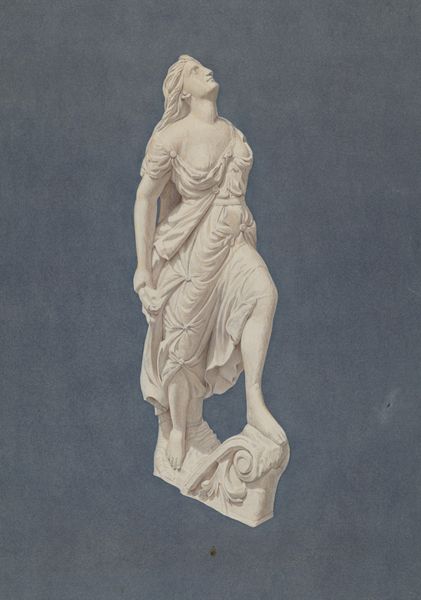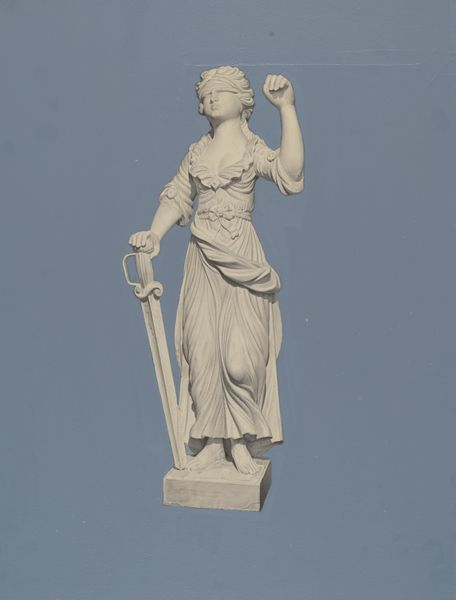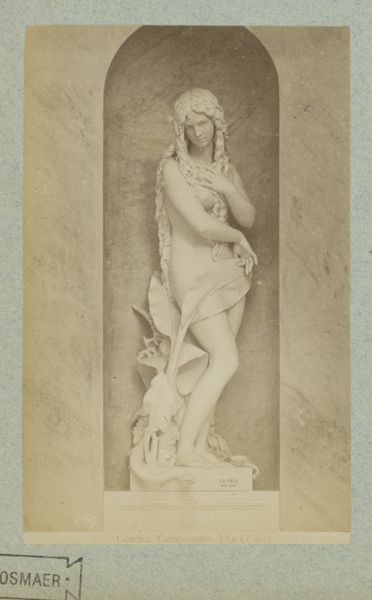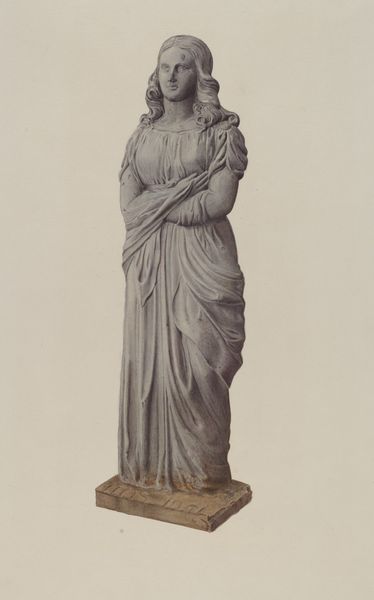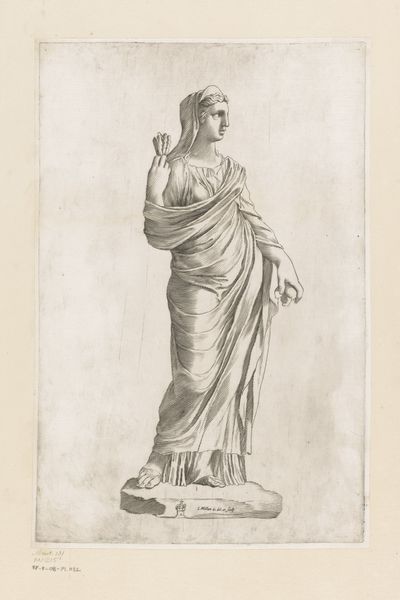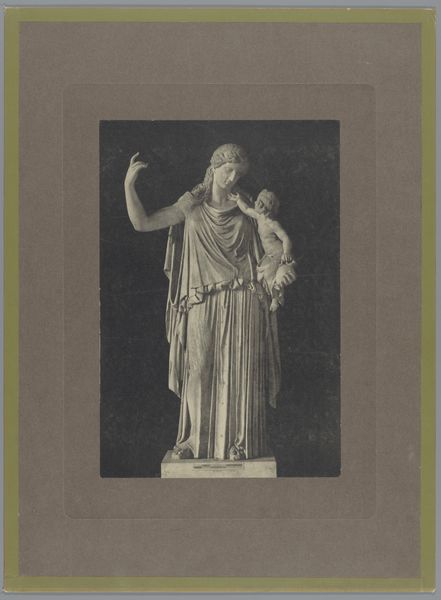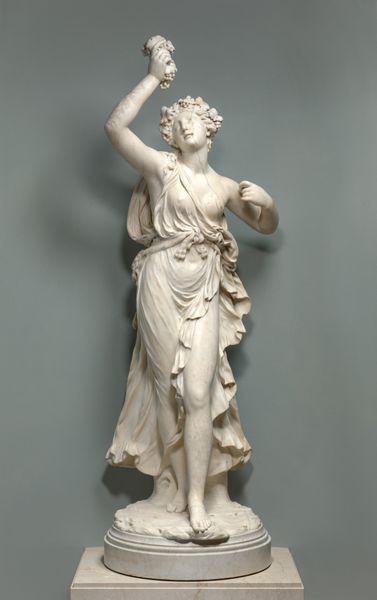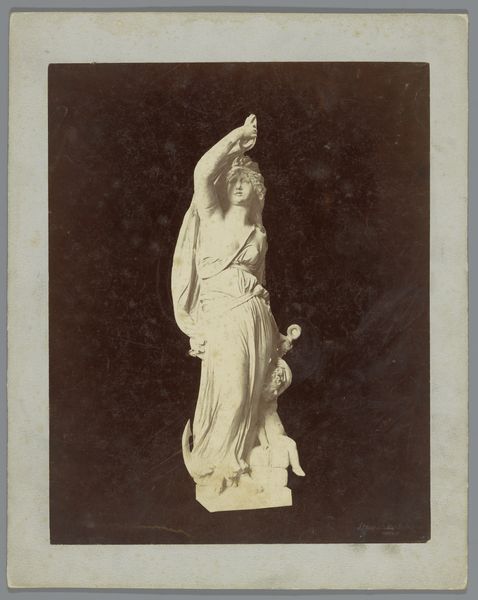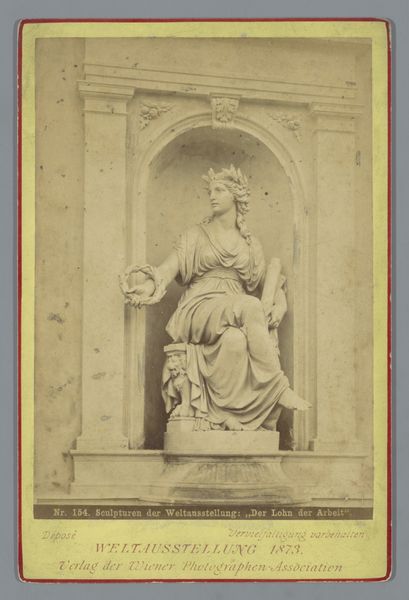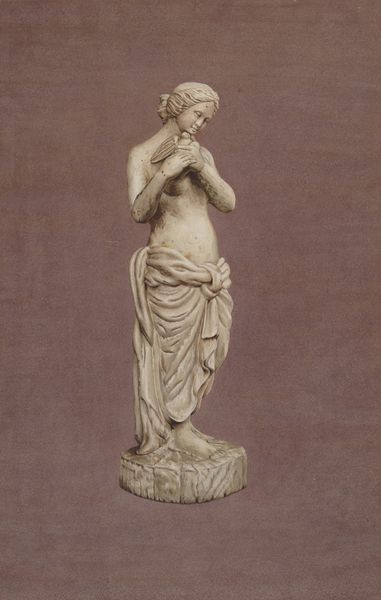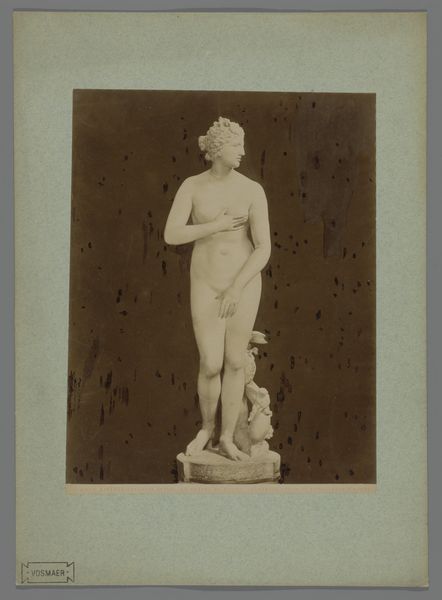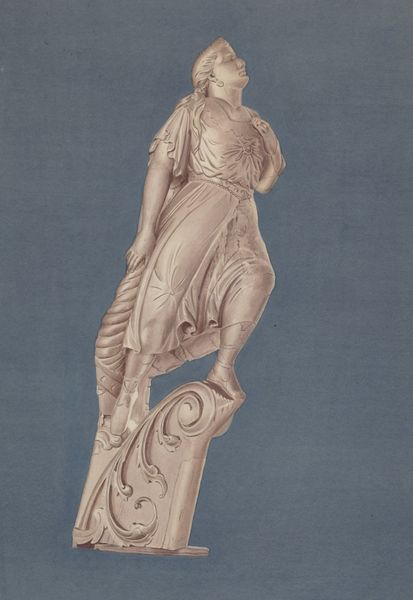
drawing, carving, relief, sculpture
#
portrait
#
drawing
#
carving
#
relief
#
caricature
#
classical-realism
#
figuration
#
sculpture
#
history-painting
#
academic-art
Dimensions: overall: 54.5 x 38.2 cm (21 7/16 x 15 1/16 in.)
Copyright: National Gallery of Art: CC0 1.0
Curator: This relief carving, entitled "Hope," dates to around 1939 and is attributed to John W. Kelleher. The medium appears to be either plaster or a similar material that lends itself to this style of architectural carving. Editor: She strikes me as… determined, almost defiant. And is that an anchor she's leaning on? Feels solid, reassuring amidst...well, everything. There's also something quite theatrical in the pose with that single raised finger. Curator: The anchor is a classical symbol of hope, a steadying presence amidst the storms of life. It fits well with the allegorical nature of Academic art, placing abstract virtues into idealized human forms. And that pointed finger does lend an air of authority! Editor: Almost too much authority? She looks a bit… severe. A hint of the schoolteacher about her. Like she's saying, “You WILL have hope, and you WILL like it!" But still, her expression is serene, which undercuts that bossy feeling, slightly. I like the contrast between the smoothness of her skin and those rippling draperies of her dress. Curator: This piece likely reflects the anxieties of the late 1930s. The looming threat of war, the tail end of the Depression... the ideal of "Hope" was a powerful national image, meant to bolster public spirit during these dark times. Artists, influenced by styles like classical realism and Academic art, drew on allegory as an established system of imbuing symbolic meaning in their artworks. Editor: Yes, those times clearly sought some stability. Like they grabbed that anchor like a lifeline in turbulent seas, hoping it will somehow save the world from drowning. She is that life raft in statue form, all serious, slightly exasperated, but definitely capable. I bet she's got a whole box of Band-Aids under her robes if you ask nicely. Curator: In a historical context, such public artworks also served as instruments of statecraft. The power of representation has always been politically motivated. Here the virtue of "Hope," idealized and accessible to the public, serves a didactic purpose during social turbulence. Editor: So even a nice gesture can come with strings attached. All this hidden context makes one almost… cynical. Still, it does change how one experiences the carving itself, this blend of aspiration, anxiety, and authority frozen in time. Fascinating. Curator: Precisely, to look beyond the surface aesthetic allows one to truly interpret these artworks within their cultural framework. Editor: Exactly! I mean, behind all those grand messages we still can sense an artist at work with an eye toward details. What a combination!
Comments
No comments
Be the first to comment and join the conversation on the ultimate creative platform.

